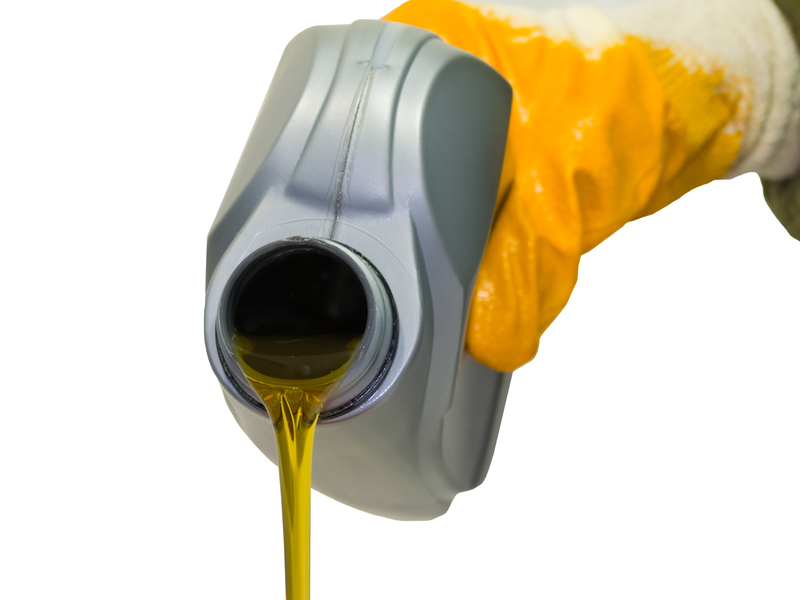From Kitchen to Recycling Plant: Disposing Pots and Pans Responsibly
Have your beloved pots and pans finally reached the end of their culinary journey? Rather than relegating those battered skillets or rusty saucepans to a landfill, it's crucial to understand how to dispose of pots and pans responsibly. The path from your kitchen to the recycling plant can be surprisingly straightforward, with plenty of options for eco-conscious cooks. This all-encompassing guide explores the best practices for recycling, donating, upcycling, and discarding old cookware, ensuring you stay both sustainable and well-informed.
Why Responsible Disposal of Cookware Matters
Our kitchens are filled with tools that help us nourish ourselves and loved ones. Over time though, pots and pans wear out, become warped, scratched, or lose their non-stick coatings. Unfortunately, millions of tons of cookware end up in landfills each year, where metal and synthetic materials can take centuries to decompose. Responsible disposal of old pots and pans protects the environment, reduces waste, and often helps others in need.
The Environmental Impact of Cookware Waste
- Metal Pollution: When metal cookware ends up in landfills, it can leach toxins and contribute to soil and water pollution.
- Non-Stick Coatings: Damaged non-stick pans can release chemicals like PTFE or PFOA--harmful substances if not managed correctly.
- Loss of Resources: Scrapping recyclable metals rather than recovering them means more mining and manufacturing, wasting energy and materials.

When is it Time to Replace Pots and Pans?
Identifying when to bid farewell to your trusty cookware is the first step toward responsible disposal. Here are some signs it's time to look for pot and pan recycling options:
- Deep Scratches or Warping: Deformation can make pans unsafe and heat inefficiently.
- Peeling Non-Stick Surface: Flaking coatings not only reduce cooking performance but can also contaminate food.
- Loose or Broken Handles: Dangerous to use and difficult to repair.
- Visible Rust: Especially on uncoated cast iron or steel cookware.
Can Pots and Pans be Recycled?
The good news is that most cookware is recyclable, but the method depends on materials and local recycling rules. The majority of pots and pans are made from metals like aluminum, stainless steel, or cast iron--all of which are recyclable. However, non-stick coatings, plastic handles, or glass lids may complicate the process.
Recycling Metal Cookware
- Pure Metal (Aluminum, Stainless Steel, Iron): Remove other parts, like plastic handles or glass lids. These metals are widely accepted at scrap metal yards or specialized recycling facilities.
- Non-Stick Pots and Pans: If the coating is PTFE-based (Teflon), not all centers can handle these products. Call ahead to ask!
- Copper Cookware: Highly valued at metal recycling yards. Ensure that aluminum core or non-stick interiors do not hinder acceptance.
- Cast Iron: Nearly indestructible and sought after by most recyclers, even if rusty.
How to Prepare Old Pots and Pans for Recycling
To maximize the chances of your unwanted cookware being recycled, follow these steps:
- Clean Thoroughly: Remove all food residue and oil. Rinse well to prevent contamination in recycling facilities.
- Disassemble: Where possible, take off plastic or wooden handles and discard them appropriately. Glass lids cannot usually be recycled with metal cookware and need to be separated.
- Sort by Material: Scrap yards pay more or may only accept sorted metals.
- Do Not Bag: Drop off loose items as most centers will not open plastic bags.
Finding a Recycling Facility Near You
- Check Local Listings: Search online using keywords like "kitchenware recycling," "scrap metal recycling," or "pot and pan disposal near me."
- Municipal Recycling Programs: Some curbside pickup programs now accept certain metal cookware.
- Hazardous Waste Collection Days: Non-stick pans containing PFAS may require special drop-off events.
- Big Box Retailers: Some retailers offer recycling programs during Earth Month or trade-in events.
Alternatives to Recycling: Donating, Reusing, and Upcycling
Before you recycle, consider if your old cookware might have a second life elsewhere. Donation, reusing, and upcycling are powerful ways to keep pots and pans out of the landfill and support others or your own creativity.
Donating Used Pots and Pans
- Charity Shops & Thrift Stores: As long as your cookware is in decent shape (no deep rust, intact handles), many non-profits will gladly accept pots, pans, and lids.
- Homeless Shelters/Pantry Kitchens: These organizations often need quality cookware, especially larger pots and sheet pans.
- Community Centers or Start-Up Kitchens: Youth groups, cooking classes, or community kitchens may be thrilled to receive extra supplies.
- *Always check the donation policy before delivering items.*
Upcycling and Repurposing Ideas
If donating isn't an option, get creative and turn those old pots and pans into something new and useful! Here are a few ideas:
- Planters: Drill small drainage holes and decorate for use as quirky garden planters.
- Storage Solutions: Use deep pots for storing utensils or art supplies.
- Bird Feeders or Baths: Pans make durable and charming outdoor fixtures.
- Wall Decor: Arrange vintage pans on your kitchen wall for a rustic or industrial look.
- Craft Projects: Repurpose non-stick pans for making magnetic boards, clocks, or fairy gardens with a bit of imagination.
How NOT to Dispose of Pots and Pans
For the sake of our environment and safety, avoid these outdated practices of disposing unwanted pots and pans:
- Putting in Regular Trash: Most metal cookware will not break down and can even damage landfill equipment.
- Illegal Dumping: Abandoning items on the curb, in parks, or dumpsters not only pollutes the environment but may result in fines.
- Burning Cookware: Never attempt to burn non-stick coated pans, as this can release toxic fumes (PTFE/PFOA) and endanger your health.
What About Special Materials? Glass, Ceramic, and Composite Cookware
Not all cookware is created equal, and disposal options will vary for glass, ceramic, or composite materials:
- Glass Lids: Tempered glass can't usually go in regular glass recycling bins. Look for specialized facilities or inquire with the manufacturer for take-back programs.
- Ceramic & Stoneware: These are rarely accepted in standard curbside recycling. Consider breaking into pieces for drainage in plant pots or donating if still in good condition.
- Composite Cookware: Combined materials (e.g., steel pans with silicone handles) often must be separated before recycling.
Disposing Non-Stick Pans Safely
What should you do with old non-stick pans? Because of their chemical coatings, special care is necessary:
- Contact Local Waste Departments: Some cities treat non-stick coatings as hazardous and require drop-off at special facilities.
- Manufacturer Take-Back: A few leading brands participate in cookware recycling--search "non-stick pan recycling program."
- Don't Mix with Other Metal Waste: Coated pans may contaminate scrap metal batches at the recycling plant.
When Does Non-Stick Cookware Become Unusable?
- Deep scratches or chips: Exposes underlying metal and may cause toxic chemical release.
- Bubbled or Flaking Surface: Can transfer chemicals into your food.
- Deformed or Burned Pans: No longer safe for cooking and should be recycled or disposed of per hazardous waste guidelines.
DIY Projects for Old Pots and Pans
Are you handy or crafty? Here are some unique DIY ways to reuse or upcycle unwanted cookware, saving money and reducing waste:
- Miniature Herb Gardens: Even a scratched-up saucepan can be lined with pebbles and filled with soil--a practical and adorable garden on your windowsill.
- Hanging Light Fixtures: A deep old stockpot can house a bulb and become an industrial-style pendant lamp.
- Drip Trays and Outdoor Use: Pan bottoms make durable trays for grilling supplies, ashes, or even boot storage.
- Children's Toys: Kids love using small pots and pans for imaginary play or mud kitchens.
Responsible Cookware Disposal by Material Type
- Stainless Steel: Universally recyclable, drop off at a scrap metal yard or through some curbside programs.
- Aluminum: Highly valued material, recyclable nearly everywhere, but plastic handles must be removed.
- Cast Iron: Acceptable at all metal recycling facilities--even rusted or broken pieces.
- Copper: Excellent resale or value for recycling, sort from other metals for the best price.
- Non-Stick-Coated: Check with your local facility--never place with typical aluminum or steel scrap due to coating chemicals.
- Glass Lids: Not accepted in bottle recycling--find a hazardous waste center if needed.
- Ceramic: Donate if possible; otherwise, dispose of in landfill waste, as ceramic is non-recyclable in most programs.
Frequently Asked Questions (FAQ)
Can I put old pots and pans in my curbside recycling?
While some municipalities now accept metal cookware in curbside recycling, many do not due to the weight and non-metal components. Always check with your local waste authority.
Are rusty pans recyclable?
Yes! Rust does not harm the metal recycling process. Rusty pots and pans can be recycled as scrap metal.
How do I dispose of broken glass lids from pots?
Broken tempered glass is not recyclable in standard glass bins. Wrap broken glass in newspaper or a thick bag for safe landfill disposal, or find a specialized facility.
Can non-stick cookware be recycled?
Some specialized recyclers accept non-stick pans, but you must check locally due to coating chemicals.
What to do with really old or antique cookware?
If the item is vintage or antique, consider selling or donating to a collector, antique store, or charity to preserve its history and value.

The Future of Cookware Recycling
As more people seek eco-friendly lifestyles and manufacturers phase out toxic coatings, circular economy practices are becoming standard in kitchenware manufacturing and disposal. Thanks to green initiatives and improved municipal programs, it's getting easier for everyone to find a sustainable home for old pots and pans.
Conclusion: Your Journey to Responsible Pots and Pans Disposal
The journey from your kitchen sink to the recycling plant needn't be complicated or guilt-ridden. With the right knowledge, you can ensure every pot, pan, or lid ends its life cycle in the most sustainable and impactful way possible. Whether you choose to recycle, donate, or give your cookware new purpose, you are helping to address an often-overlooked environmental challenge.
Let's keep those pots and pans out of the landfill--recycle, donate, and upcycle whenever you can! For further information, always check your local municipality's recycling guidelines or visit the official websites of cookware brands for take-back programs.
By understanding how to dispose of cookware responsibly, you do more than declutter your kitchen--you contribute to a cleaner planet and a culture of sustainability for generations to come.